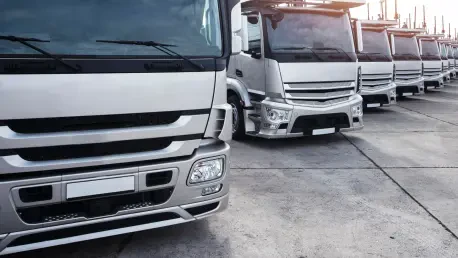I’m thrilled to sit down with Rohit Laila, a seasoned veteran in the logistics industry with decades of experience in supply chain and delivery. Rohit has a deep passion for technology and innovation, making him the perfect person to discuss the latest trends and developments in the commercial vehicle market, particularly FORLAND’s recent expansion into Southeast Asia with a significant 260-truck order in the Philippines. In this conversation, we’ll explore the strategic importance of this move, the unique features of the trucks delivered, the power of local partnerships, and the future of logistics in the region.
How does FORLAND’s delivery of 260 trucks to the Philippines fit into the broader picture of their growth strategy in Southeast Asia?
This delivery is a pivotal moment for FORLAND as it solidifies their foothold in Southeast Asia, a region with booming logistics needs. It’s not just about moving trucks; it’s a strategic step to deepen market penetration and build trust with local businesses. Since entering the Philippine market in 2009, they’ve been steadily expanding, and this order shows their commitment to becoming a dominant player in the light commercial vehicle segment across the region. It’s about creating a network of reliable solutions tailored to local demands, which is key to long-term growth.
What is it about the Southeast Asian market, particularly the Philippines, that makes it such a critical focus for FORLAND right now?
Southeast Asia, and especially the Philippines, is a hotbed for logistics growth due to rapid urbanization and e-commerce expansion. The demand for efficient transport solutions—whether it’s for regional haulage or last-mile delivery—is skyrocketing. The Philippines, with its unique geography of islands and growing economy, presents both a challenge and an opportunity. FORLAND sees this as a chance to address specific needs like navigating congested urban areas or handling diverse cargo types, positioning themselves as a go-to brand in a high-growth market.
Can you walk us through the significance of the handover ceremony that took place in Angeles City in August 2025? What stood out to you about the event?
The handover ceremony in Angeles City was more than a formality; it was a powerful statement of intent. Bringing together senior executives, media, and industry partners, it showcased FORLAND’s dedication to the Philippine market. The vibe was electric—there was a real sense of partnership and optimism. It wasn’t just about handing over keys; it was a celebration of collaboration with local players like YIMI CARGO and QSJ Motors. Events like these build confidence and signal to the market that FORLAND is here for the long haul.
Let’s dive into the trucks themselves. What makes the L5 light trucks particularly well-suited for the logistics challenges in the Philippines?
The L5 light trucks are designed with regional transport in mind, balancing a solid gross vehicle weight of 6.5 to 9 tonnes with fuel efficiency. Their extra-wide cargo beds are a game-changer, allowing logistics firms to load more per trip—think two rows of pallets side by side. This directly cuts down on operational costs, which is huge for businesses operating in a price-sensitive market like the Philippines. Plus, the ergonomic interiors, akin to passenger cars, keep drivers comfortable on long hauls, which is critical in a country with diverse terrains and long travel times.
Shifting to the T5 mini trucks, how do their features address the growing demand for last-mile delivery in urban areas?
The T5 mini trucks are built for the hustle of urban logistics. With a lighter gross vehicle weight of 2.5 to 4.5 tonnes, a lightweight chassis, and a low cargo floor, they’re incredibly nimble in tight city streets—perfect for express delivery or fresh produce transport. Their design makes loading and unloading easier, saving time in fast-paced urban environments. In a place like the Philippines, where last-mile delivery is becoming a cornerstone of e-commerce, these trucks meet a very real and urgent need for efficiency and maneuverability.
Partnerships seem to play a big role in FORLAND’s approach. How have alliances with local companies strengthened their presence in the region?
Partnerships are the backbone of FORLAND’s strategy in Southeast Asia. Working with local entities like QSJ Motors in the Philippines ensures they’re not just selling trucks but providing a full ecosystem of support—think spare parts, maintenance, and driver training. This builds trust with customers who need to know they won’t be left high and dry after a purchase. Collaborating with a logistics firm like YIMI CARGO also means FORLAND can tailor solutions to real-world operational needs, creating a feedback loop that drives product improvement and market relevance.
Looking ahead, how do you see innovations like new energy vehicles and digital solutions shaping the logistics industry in Southeast Asia?
The future of logistics in Southeast Asia is going to be heavily influenced by sustainability and technology. New energy vehicles (NEVs) are a big part of that, as the region moves toward cleaner energy to combat urban pollution and meet global carbon goals. Digital solutions, like GPS fleet tracking or predictive maintenance, are equally transformative—they optimize routes, reduce downtime, and cut costs. FORLAND’s focus on these areas shows they’re not just reacting to trends but aiming to lead the charge. It’s an exciting time, as these innovations could redefine efficiency in a region with complex logistics challenges.
What is your forecast for the evolution of the commercial vehicle market in Southeast Asia over the next decade?
I believe the commercial vehicle market in Southeast Asia is on the cusp of a major transformation. With urbanization accelerating and e-commerce continuing to explode, the demand for versatile, efficient vehicles will only grow. We’ll likely see a stronger push toward electric and hybrid trucks as governments tighten emissions regulations. At the same time, digital integration—think smart fleets and real-time data—will become standard, not a luxury. Companies like FORLAND that balance affordability, reliability, and innovation will thrive, but they’ll need to stay agile to keep up with evolving customer expectations and infrastructure developments in the region.









